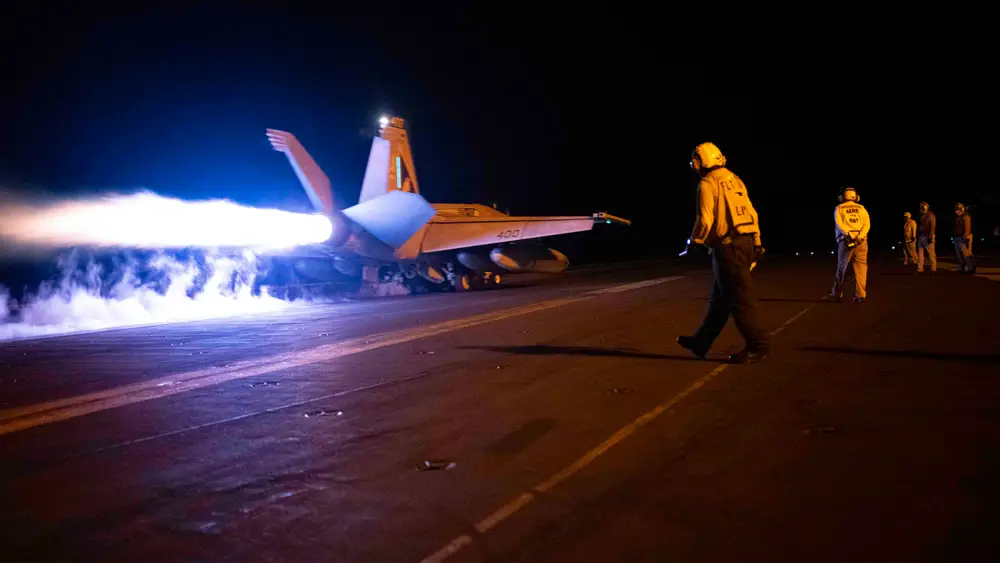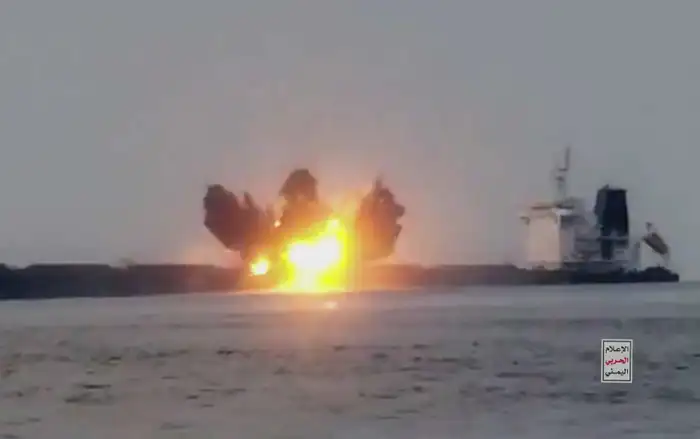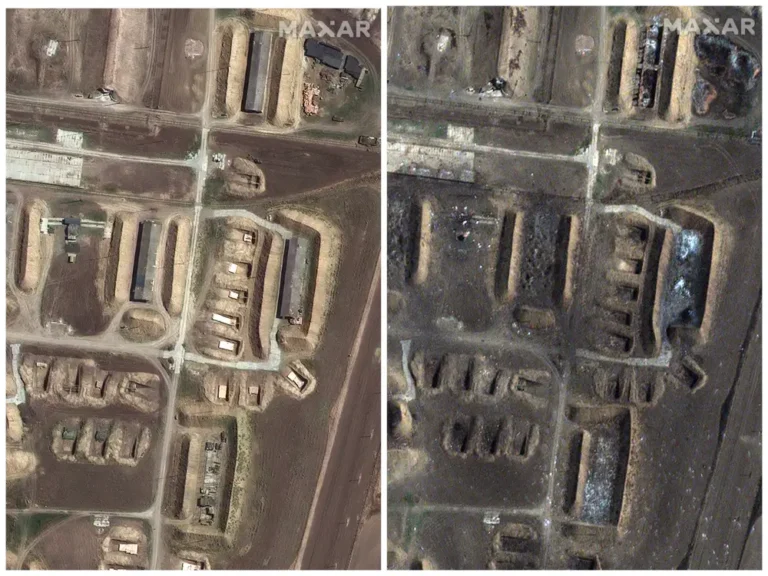The US military’s fight with the Houthis is locked in a dangerous stalemate

An F/A-18E Super Hornet fighter jet takes off during flight operations aboard the aircraft carrier USS Dwight D. Eisenhower, which spent months battling the Houthis.
On a blue sky day last November, a helicopter carrying Houthi gunmen descended on a commercial shipping vessel in the Red Sea. The rebels jumped out, seized control of the ship, and took the crew hostage. They’re still in captivity in Yemen.
The dramatic hijacking of the Galaxy Leader, which was captured on video, catapulted the Houthis into the global limelight. In the year since, the rebels have menaced key Middle East shipping routes with missiles and drones, disrupting maritime trade.
The American military has led a Western naval coalition into battle against the Houthis to curb their relentless attacks, but a year of intense combat has brought the US no closer to ending the threat posed by the rebels — and, for now, a more aggressive approach doesn’t appear to be the desired course.
“We’re not looking for a military solution in Yemen at this particular time,” US Special Envoy for Yemen Tim Lenderking told B-17 in a recent interview. He said that chasing such an outcome could bring more devastation to a country shattered by years of war.
“To pursue that would subject Yemen to more years of death and destruction and military conflict,” he explained, arguing that “it is essential to consider the impact on Yemeni civilians, on the impact on Yemen’s economy and infrastructure, the ability to move supplies in, the ability for commercial goods to get into Yemen.”
That restrained approach to the ongoing Houthi crisis leaves the US military engaged in combat operations without a clear path to victory.
‘The threat still persists’
The Houthis have launched more than 130 attacks targeting military and civilian vessels in the Red Sea and Gulf of Aden in a campaign that the Iran-backed rebels claim is connected to the Israel-Hamas war. They have struck a number of commercial ships, sinking two of them and hijacking one (the Galaxy Leader), and killed four sailors.

Footage released by the Houthis shows an explosion on a commercial vessel during an attack. The rebels have employed a variety of weapons, including anti-ship missiles, drones, and uncrewed naval vessels.
Merchant shipping through the Red Sea normally accounts for as much as 15% of global maritime trade, the US Defense Intelligence Agency said in a report earlier this year. However, the ongoing Houthi attacks have caused a notable decline in activity along that critical route, forcing ships to make longer and more expensive trips around Africa.
US warships and aircraft operating in the region have routinely been tasked with intercepting Houthi missiles and drones in defense of key shipping lanes. The military has also carried out airstrikes against the rebels in Yemen, targeting their weapons, launchers, and other facilities.
The Pentagon has said that these efforts are intended to degrade the Houthis’ capabilities, but the rebels still retain the ability to target ships. This month alone, for instance, they have launched attacks on a commercial vessel and several American destroyers, though they have yet to score a hit on a warship.
Analysts at the International Institute for Strategic Studies think tank said last month that even though Houthi strikes against commercial ships have declined, the response — which includes American, British, and Israeli strikes — over the past year has been insufficient.
“The threat still persists, and there doesn’t seem to be much abating that,” retired Gen. Joseph Votel, who oversaw military operations in the Middle East in the 2010s as the commander of US Central Command, told BI.
He said that US military operations “have been clearly focused on trying to defend ourselves and going after launch sites, production sites, storage sites, maybe some command and control sites — but none of that seems to be deterring the Houthis at all.”
Limited options
Some analysts have said the US should consider a more aggressive response to the Houthis, including greater efforts to cut the flow of weapons and capabilities from Iran.
Brian Carter, the Middle East portfolio manager at the American Enterprise Institute’s Critical Threats Project, wrote in an analysis earlier this month that “allowing the Houthis to protract their gradual escalation campaign is a much more dangerous policy choice for the US in the long run than a more decisive military effort would have been.”
The Navy admiral overseeing naval operations in the Middle East has said that military action alone won’t be enough to stop the rebels. “The solution is not going to come at the end of a weapon system,” Vice Adm. George Wikoff, who leads US Naval Forces Central Command, stressed at a think tank event in August.
A diplomatic solution, however, remains unclear. The Houthis have tied their actions to the Gaza war, but it remains to be seen if a cease-fire between Israel and Hamas pushes them to stop their attacks. The rebels did not adhere to a pause in fighting last fall.

An F/A-18E Super Hornet prepares to launch off the flight deck of the Eisenhower. The Nimitz-class carrier has led the bulk of the military’s counter-Houthi operations.
With no apparent end in sight, the conflict has raised real concerns about sustainability. Over the past year, the Navy has fired off hundreds of munitions in its Middle East operations, costing over $1.8 billion and draining the Pentagon of key missiles that are expensive to procure.
Votel, now a distinguished senior fellow on national security at the Middle East Institute think tank, said that the US can continue to send warships into the fight, but the conflict is impacting other priorities within the Pentagon’s national security strategy, such as China’s growing military capabilities.
There are no indications that US naval activity is set to wind down. Officials stress that Washington will continue to act against the Houthis to stop their attacks. Even as some warships left the Middle East earlier this month, other vessels have already moved in to take their place.
“We are committed to ensuring the freedom of navigation, ensure that ships are able to pass through in the Red Sea,” said Lenderking, the US envoy.
“Of course, much of international commerce that flows through the Red Sea has adjusted toward alternatives,” he added. “But we think the fact that a non-state actor is aggressing the international community in this manner is not something that we or the international community should abide by.”
But, for now, it’s unclear what will make it stop.






